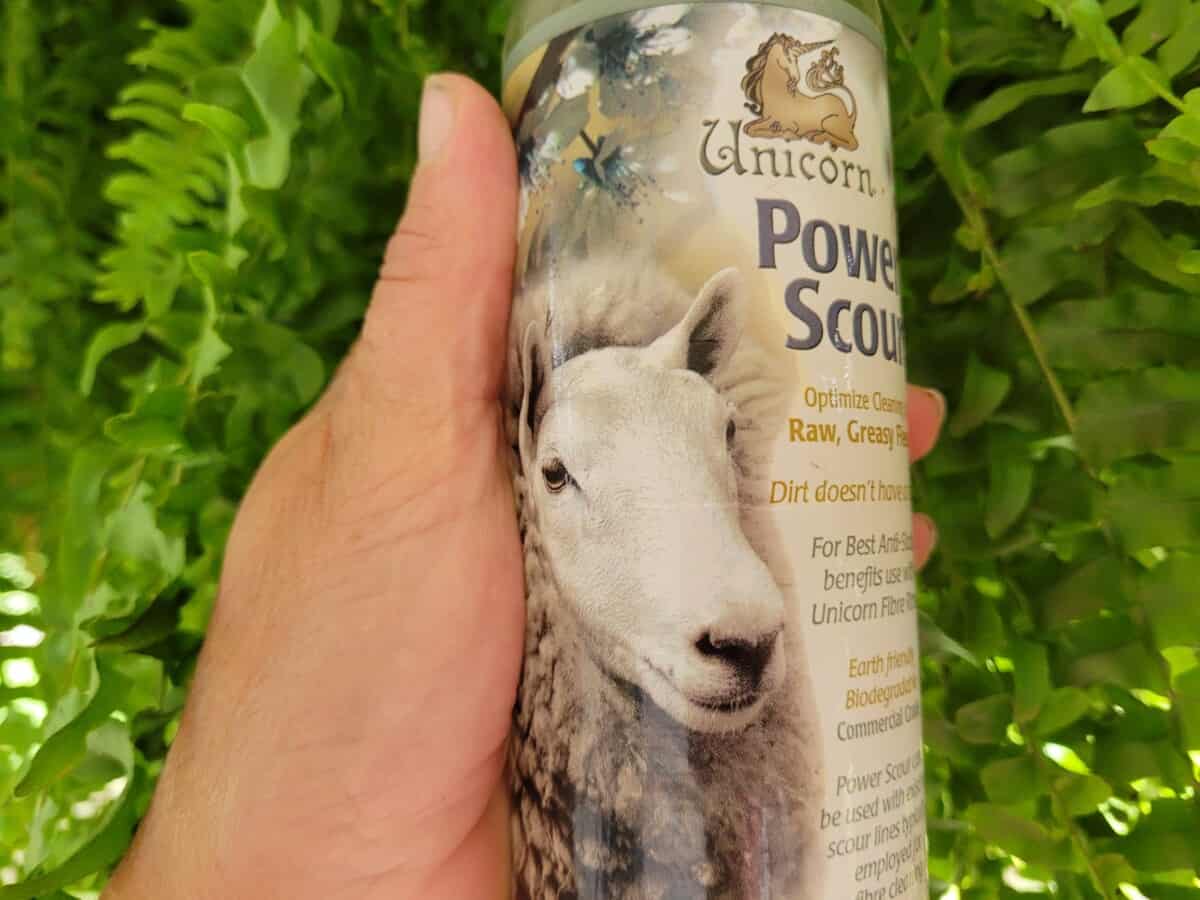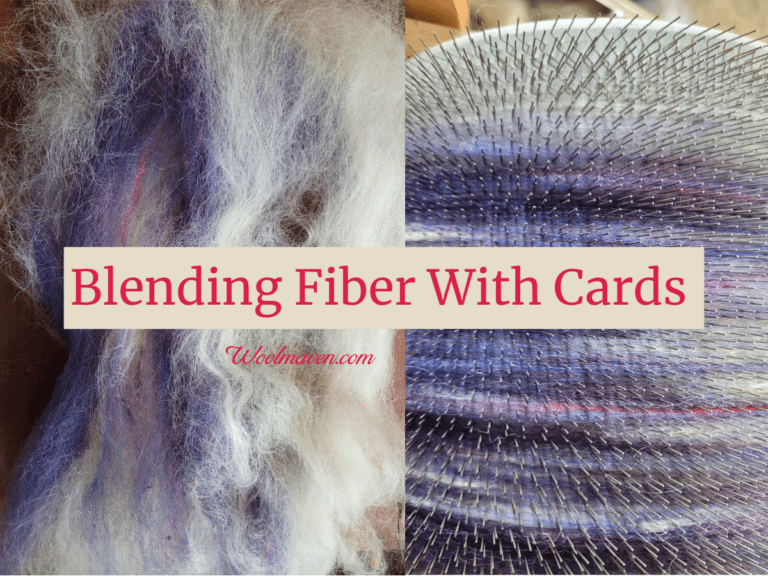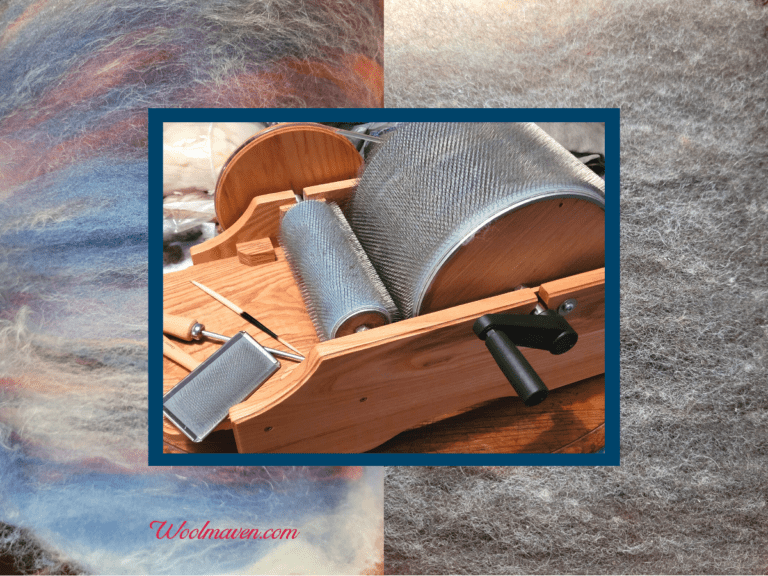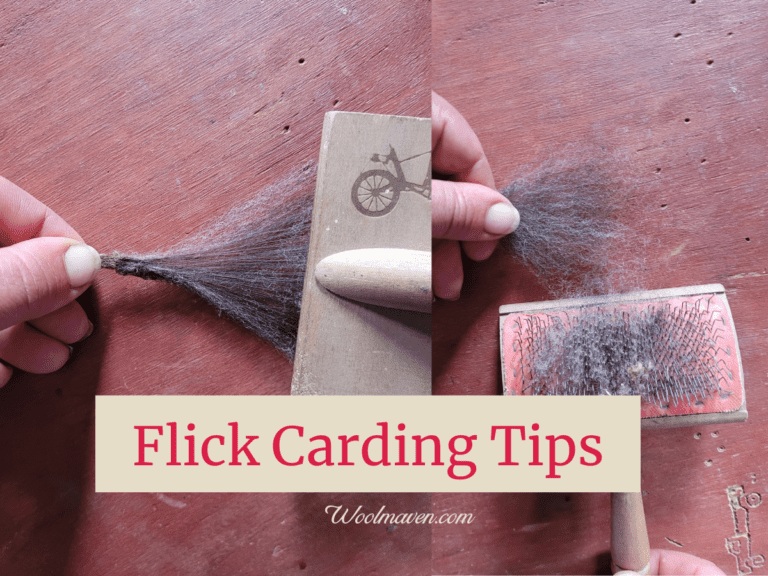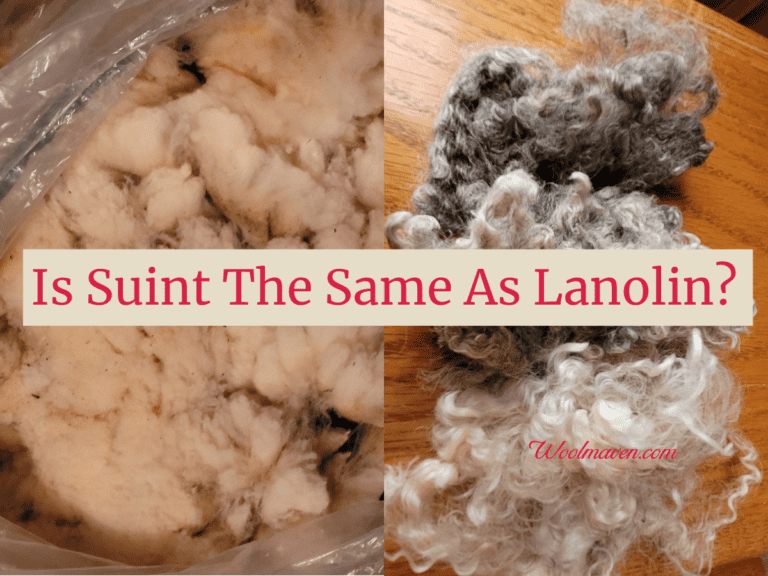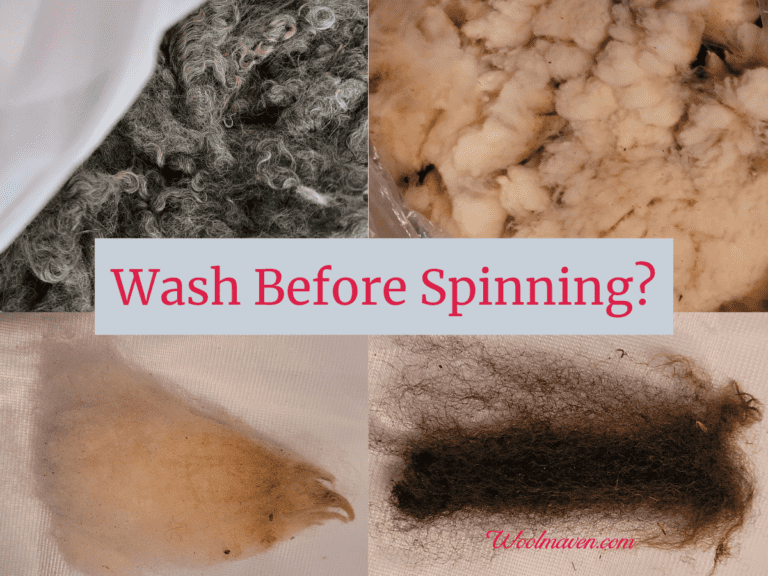Using Unicorn Power Scour For Washing Raw Wool
Wondering about using Unicorn Power Scour for your raw wool but not sure what you need to know or how much to use? That’s what we’re going to cover here, so read on!
What is Unicorn Power Scour?
Unicorn brand Power Scour is a fiber wash made specifically for working with raw (also called grease) wool. It is a cleaning agent that you add to hot water to remove the lanolin from wool.
I love this stuff! It works great, is easy to use and smells nice, too. I work with quite bit of raw wool (fleeces from our commercial sheep) and have had super results using Power Scour.
There are other fiber washes available, of course, I just use and like this one.
Raw Wool vs. Washed Wool: Which is best for handspinning? gives you some ideas on when it will be best to wash your wool and when you might consider working with your wool, as is.
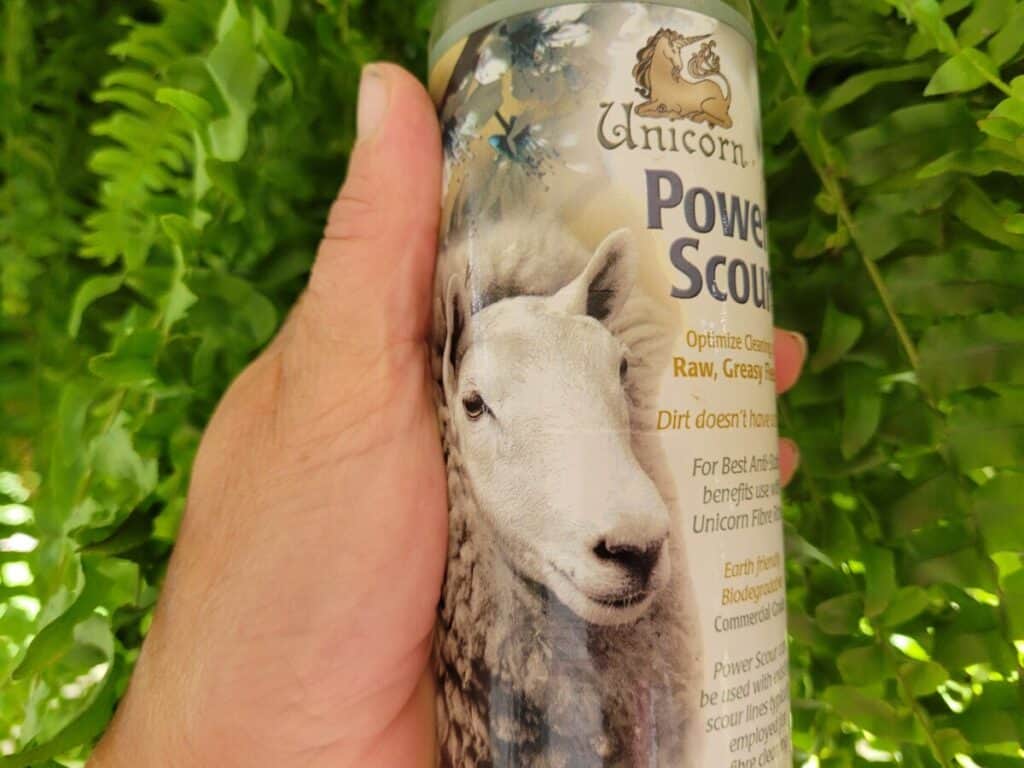
This post contains affiliate links, which means I receive commissions if you choose to purchase through links I provide (at no extra cost to you).
Unicorn Power Scour is the wool wash I use on raw fleece. Occasionally, I also use a drop or two for wet setting yarn.
Are you a beginner looking to get started with spinning? Try my Spinning Course! It will take you from total beginner to confident spinner!
How much Power Scour to use?
It is recommended on the bottle to use 5% of the weight of the raw wool in the first fiber wash and 3% in the second wash.
If you are washing one pound of raw wool, you’ll need to use 5% fiber wash for the initial wash, which is .8 ounces or 1.6 tablespoons for the first wash.
For the second wash with the same one pound of wool, you’ll need to use 3% fiber wash, which is .48 ounces or 1 tablespoon of fiber wash (actually it’s .96 tablespoons, I rounded up).
The entire 16 ounce bottle is enough to do the first wash for 20 pounds of wool. This means you’d need more, since most folks will do two washes for raw wool, especially if it’s high grease.
The entire bottle would do both washes for 10 pounds of raw wool. Half the bottle of fiber wash is used for the first wash, leaving enough fiber wash to do a second washing plus some.
Unicorn Fiber Wash math
So, how much fiber wash will you end up using? Let’s get that figured out now.
The math is straightforward, as long as you know how much wool you are starting with:
You’ll just need to figure up both 5% and 3% of the weight of the wool and convert that to a measurement that you can use.
I used tablespoons, since it’s a size most folks are familiar with. Alternatively, you could weigh out the fiber wash on a digital scale, either one is fine as long as it makes sense to you.
If you decide to presoak the wool (see below) you’ll need to use less fiber wash in the initial wash. I’d start with the 3% fiber wash (or less) and see how it goes.
Being completely upfront here, I tend to just guesstimate the amount of Power Scour and see how it goes! If I need to I’ll just run another wash.
But…I’ve used it for years and am normally working with a low grease, hard to felt wool. If you are new, measure out the Power Scour the first few times you use it until you get the feel for it.
When I’m working with a new to me wool or a purchased fleece I tend to follow the guidelines more closely. Especially for any wool that is prone to felting, I want to wash it right the first time!
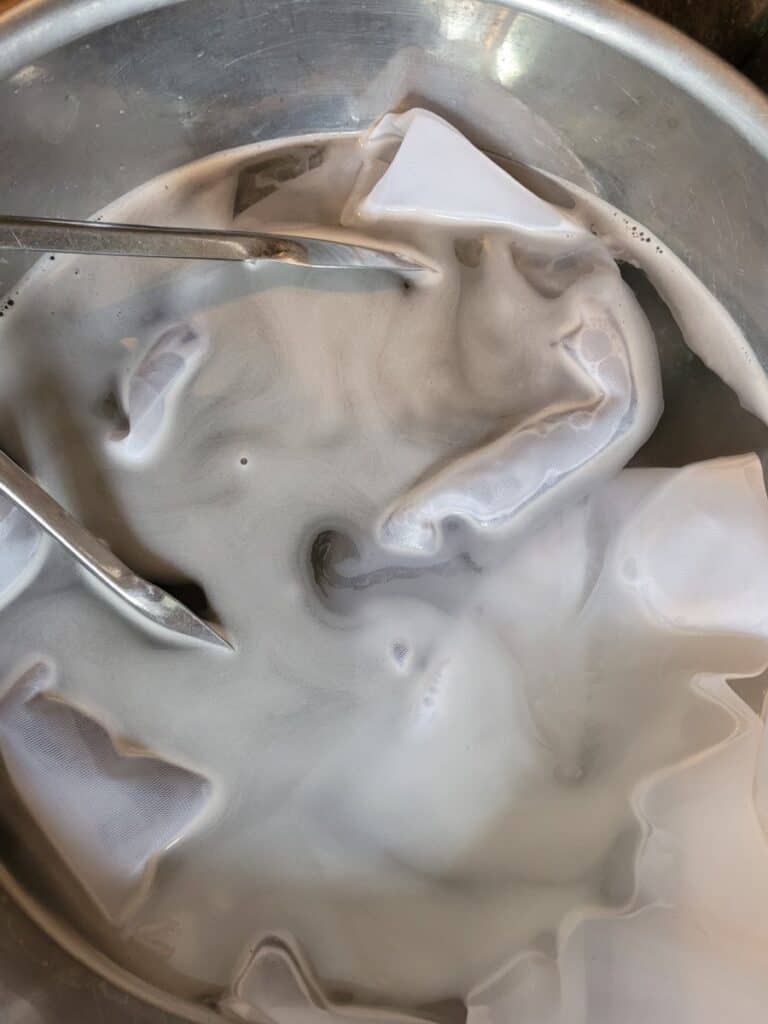
Have your wool washing equipment ready
Have your equipment ready to go and the area you plan to work in clear.
You don’t want to be searching around to find something when you get started washing the raw wool or get sidetracked on something else and loose track of the time.
Actually, this being an easy job (washing wool) may be part of the problem, it’s definitely not rocket science, but it’s easy to overlook a few of things you need to have right!
The equipment you’ll need to wash raw wool is:
- two watertight containers that easily hold the wool
- the fiber wash
- a mesh laundry bag
- a timer
- well skirted raw wool
- hot tap water
The watertight containers can be anything that will hold the wool and plenty of wash water, so that the fiber wash can easily get to all parts of the wool to clean up the grease.
If you use small containers, you’ll have to wash in multiple batches or pack in the wool which makes it harder to clean. It will be easier to just start with something bigger.
I use plastic dish tubs or large stainless steel bowls. You could also use your sink, especially if it is a double sink.
You’ll also notice that with the container sizes mentioned, I tend to wash sections of fleece, not the whole thing at once. Start with a smaller section of your fleece, if you are a beginner.
The fiber wash I prefer is Unicorn Power Scour. Unicorn Power Scour is a detergent, not a soap, so if you decide to use another fiber wash, make sure it is a detergent, as well.
A mesh laundry bag will hold all of the wool fibers together, minimize the chance of felting and keep any stray fibers out of your drain!
Grab one at your local grocery store, they are cheap and readily available, mine was $2.49 for a small one and the large ones are less than $10.
A timer will keep you on track! You want to give the fiber wash time to work, but not leave the wash long enough that the grease separates back out when the water cools.
The timer can be an egg timer or just use the built in timer on your phone.
Starting with well skirted wool will help you clean your wool faster.
By using well skirted wool you are getting rid of some of the contaminants, like excess dirt or manure, that the fiber wash will use some of it’s grease cleaning power to deal with.
I use hot tap water to wash wool. This is hot enough to melt out the lanolin but not crazy hot to parch the wool.
If your hot water is not hot enough for you, you can bump up the temperature by adding a bit of higher temperature hot water from a pan of boiling water or from a water kettle.
Each time you refill the containers, use the same temperature of hot water, even for the rinses.
Add Power Scour to hot water container
Now, we are ready to roll!
The basics for using Power Scour are:
- fill your first tub with hot water
- add the fiber wash and swish it around a bit
- then add the raw wool that you put in a mesh bag
Strictly speaking, you don’t have to use the bag, but it does keep the strays out of your drain.
The order here is important, do not run water onto the wool! You add the wool last and let it sink without stirring it or any other poking around at it. Just let it sink.
Are you a beginner looking to get started with spinning? Try my Spinning Course! It will take you from total beginner to confident spinner!
Time wash for 20 minutes
You want to time the wash for 20 minutes.
The reason you need to time it is because, like most folks (and me, for sure!), you’ll probably have other things you could be doing which will distract you and let the wash water cool down.
Cool water is a big problem for easy to felt wools, since you’ll have to put it back in hot to get out the grease that settled back onto the wool. Big temperature changes are best avoided.
Each time you switch water, you reset the timer to 20 minutes. It doesn’t matter which step you are doing, they are all 20 minutes.
Repeat wash with more detergent
Chances are you’ll want to repeat the wash with your wool. You’ll do the exact same thing as the first wash, with more fiber rinse, as well.
If the wool you are working with is super clean, the initial wash didn’t really produce much dirty water or this is a re wash due to left over lanolin from the first attempt, maybe one wash is okay.
Most times it will take at least two washes. A high grease wool, especially finer wools, may need more washes. You’ll have to see what you get as you go through the washing process.
How To Wash Raw Wool Fleece is on the Unicorn Clean Power Scour site. Power Scour is sold on this site and by quite a few farm or small fiber shops, if you want to shop more locally.
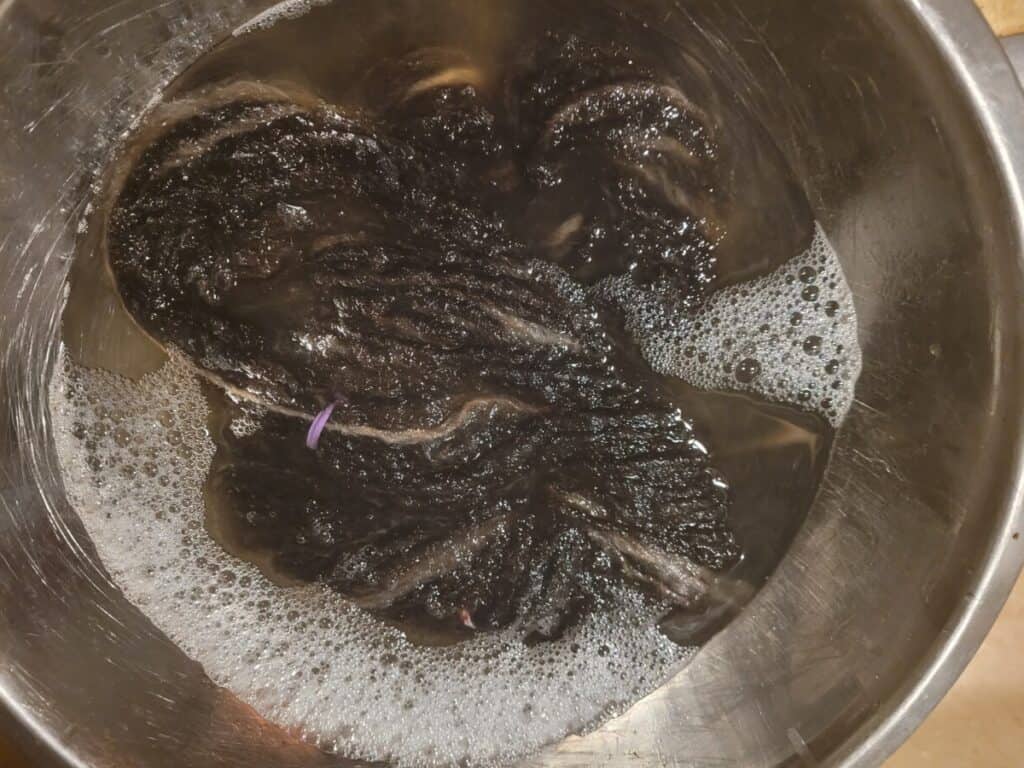
Rinse with plain water
You’ll want to rinse your now clean wool with water. Remember, you need to keep the temperature the same for both the rinse and the wash if you have a feltable wool.
A lot of the wool that I work with and some of the other fibers, like mohair, are not prone to felting or are just plain difficult to felt so I don’t need to worry about rinse water temperature.
I work with a lot of Dorset or Dorset cross wool that is actually quite hard to felt, so I just use whatever water temperature is easy and it works out fine.
If you are working with easy to felt wool, you’ll need to be very careful and keep water temperature constant throughout the entire washing process and keep agitation to an absolute minimum.
What about using a fiber rinse?
There are fiber rinses available and if they sound good to you, give them a shot, but know that they should only be used if you plan to use the wool, as is.
If you plan to dye the wool or might dye the wool but you aren’t completely sure yet, skip the fiber rinse and just use plain water.
Presoak raw wool to use less fiber wash
If you have the time, you can use an extra step to use less total fiber wash.
The first thing you’ll want to do, which really just makes your fiber wash have an easier job, is to soak the wool overnight in lukewarm water. This is called a suint soak.
A suint soak gets out dirt and sweat from the sheep so fiber wash will only have to work on removing the lanolin.
This is an optional first move but if you are willing to do it, you’ll get more results from your fiber wash and be able to wash more fleeces per bottle, since you’ll need less fiber wash per fleece.
If you are in a rush or don’t want to use a suint soak first, no problem, just wash the fleece like normal. This is just an option if you are interested in trying something new.
I like to use a suint soak, sometimes I find it’s all that is needed to get my wool to a spinnable state. Sometimes I still end up washing, but sometimes not!
Are you a beginner looking to get started with spinning? Try my Spinning Course! It will take you from total beginner to confident spinner!

